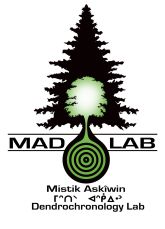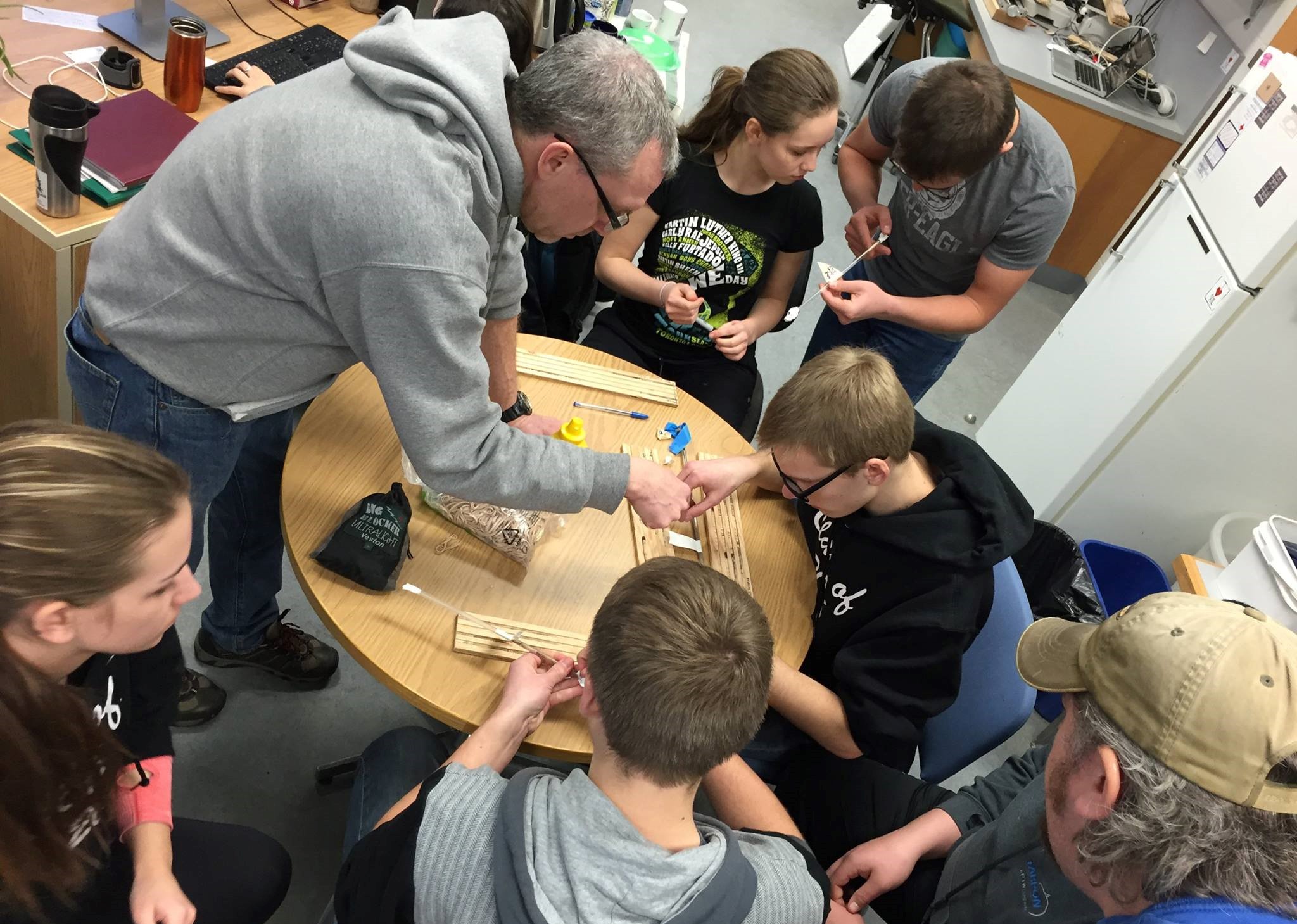What Stories Do TREES Tell Us?
Data from the dendrochronology lab and the synchrotron was collected from tree and soil samples and was added to our citizen science database, where anyone can access, compare, and investigate further! These resources are well-suited for classes in environmental sciences, chemistry, biology, land-based education, math, and more. Check out our Teaching Resources section to see options on how your class can engage.
 The Canadian Light Source acknowledges the support of the Natural Sciences and Engineering Research Council of Canada (NSERC) PromoScience to make the TREE project possible.
The Canadian Light Source acknowledges the support of the Natural Sciences and Engineering Research Council of Canada (NSERC) PromoScience to make the TREE project possible.
Project Partners

The CLS was excited to work in partnership with the Mistik Askîwin Dendrochronology Laboratory (MAD Lab) to deliever the TREE project. The MAD Lab was launched in the spring of 2014 after moving to Saskatoon from Mount Allison University. The MAD Lab was formed to investigate tree ring related research questions in many areas of Canada and now through the tree ring chronologies they have created, the MAD Lab is able to understand the climate history of various locations, date historical artifacts, and investigate how environmental contamination from humans has changed over time. Visit MAD Lab's website to learn more.
The MAD Lab is lead by Dr. Colin Laroque, a professor in Soil Science and School of Enviroment and Sustainability at the University of Saskatchewan. Colin is registered Métis and shares his knowledge of trees through his ongoing research and conversations with trees. Check out his interview with the Climate Atlas of Canada where he speaks more on his unique perspective as a Métis scholar.
With the TREE project, MAD Lab was investigating the adaptability of trembling aspen (Populus termuloides) to toxins in environments across Canada. Trembling aspen are quite abundant throughout Canada, although not all of Canada, and they tolerate, even thrive, with much higher levels of toxins in their soil than other species of trees. They can potentially be used to remediate contaminated sites. In order to study this, a large and varied sample size of this species is required and this is where students from across Canada have helped!
Teaching Resources

Various resources have been made to further student understanding about trees and research. TREE was a great cross-curricular project as it took on an interdisciplinary approach to research. The resources are adaptable to connect with curriculum across many subjects in Grades 6-12. See an example of curricular connections with Grade 8 curricula across Canada. How will TREE connect to your class?
Check out our streams below and explore what resources we have to offer. Also included in our supplemental resources are lesson plans and you can find videos that provide instruction and background knowledge throughout all the resources. We also continue to develop our resources and look to incorporate more Indigenous Ways of Knowing and meaningful content.
Connect to Classroom Curricula
What kind of resources can you expect to find in TREE? In resource modules, we provide content where students can learn about the life and nutrient cycles of trees, connecting to their communities, applying that knowledge to decipher data from the tree rings, and learning how soil plays a role. Choose which modules you want to use and incorporate it in your class!
